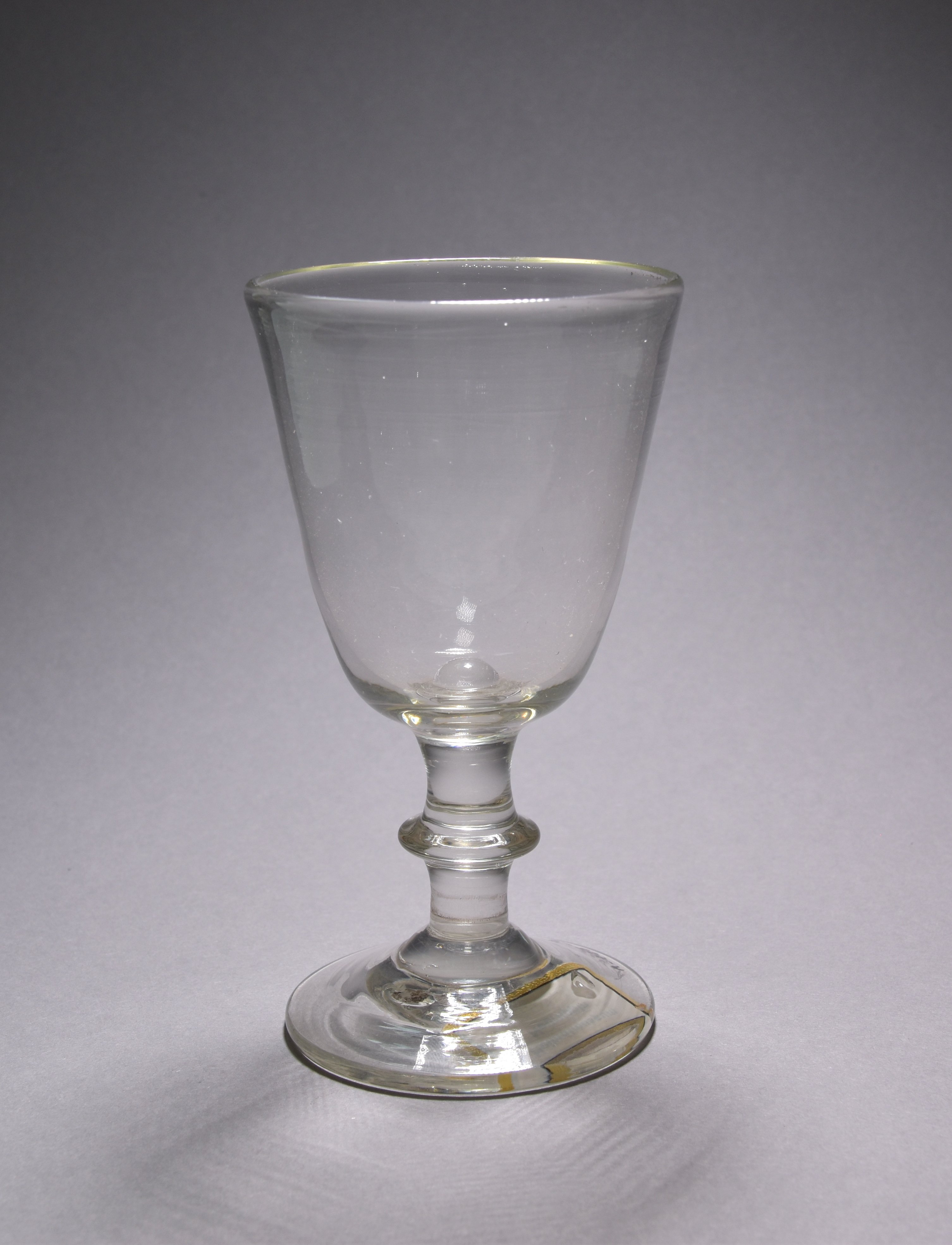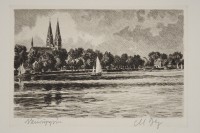Kelch aus farblosem, leicht gelbstichigem Glas, ansteigender Rundfuß, Abriss am Boden unbearbeitet, der schlanke, massive Schaft in der Mitte gedrückt, so dass er dort auskragt, angesetzt eine breite, becherförmige Kuppa, innen mit einer halbkugelförmigen, massiven Ausbuchtung, Mündungsrand verwärmt, am Boden ein Etikett beschriftet mit: Heimatmuseum Neuruppin V-652-B.
Dieses schlichte Weinglas ist von Hand gefertigt und dürfte aus der zweiten Hälfte des 19. Jahrhunderts stammen. Es handelt sich dabei um ein norddeutsches Produkt, das in der Literatur mit dem Solling in Verbindung gebracht wird (vgl. Dexel, Gebrauchsglas, 1977, Kat. 228, S. 207). Seine Herkunft ist nicht dokumentiert. Es gelangte 1967 als Geschenk in den Sammlungsbestand. [Verena Wasmuth]
en

